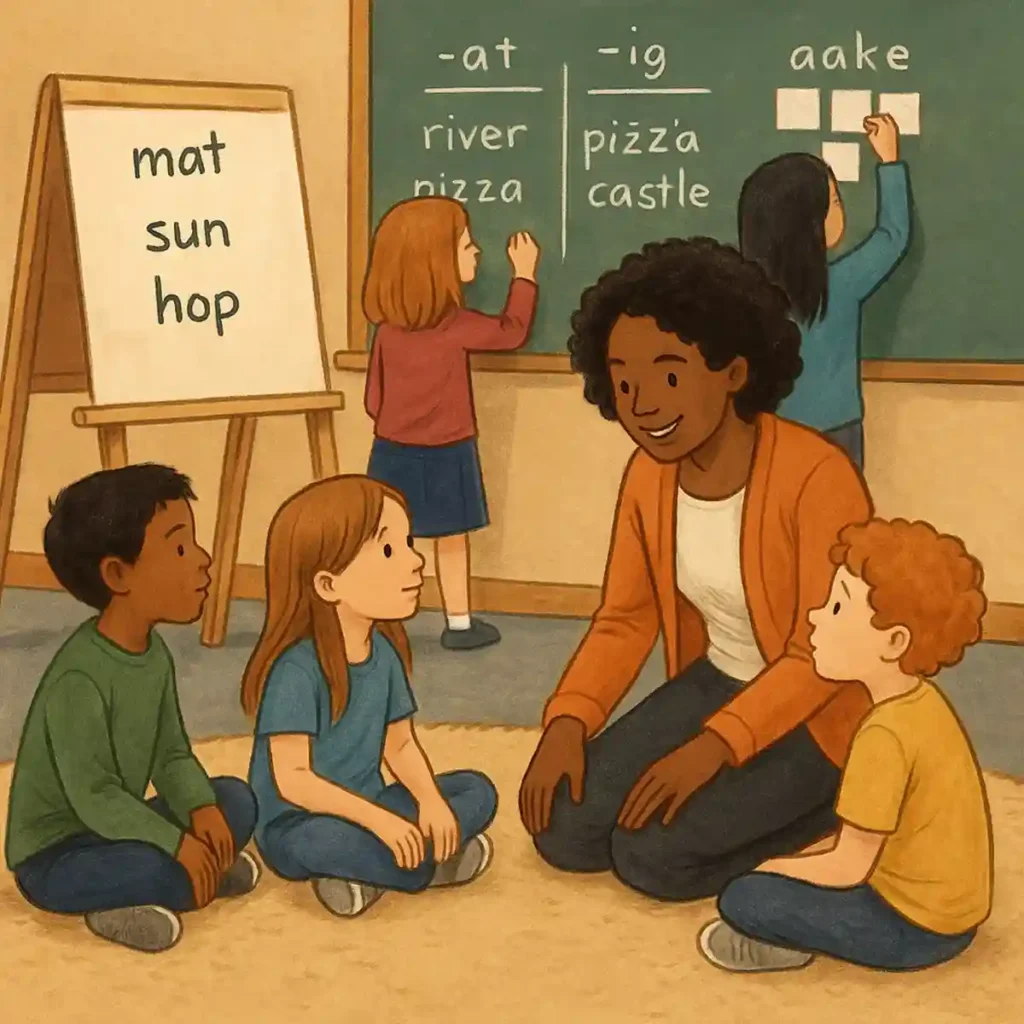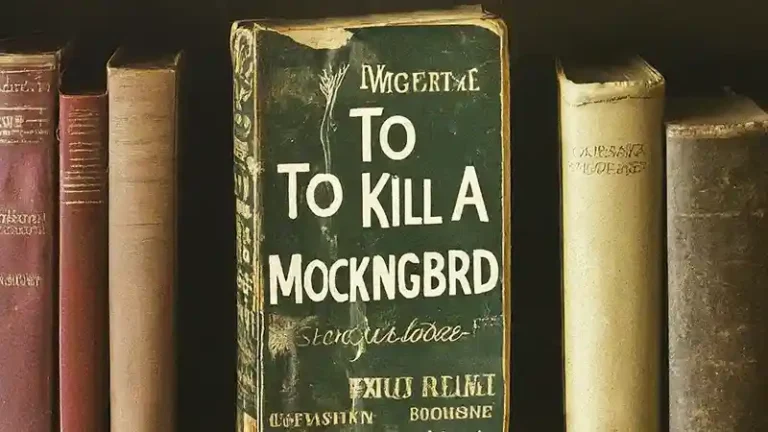Rhyme Time Challenge: Turning Rapid Rhymes into Remarkable Learning
Why I Swear by the Rhyme Time Challenge
If you’ve ever watched a room full of students transform from Monday-morning zombies into word-slinging poets in under sixty seconds, you already know the magic of a good rhyming game. The Rhyme Time Challenge is my go-to energizer for breaking linguistic ice, stretching vocab muscles, and sneaking phonemic-awareness practice into class without anyone noticing it’s work. Plus, I get to shout random words like “platypus” with a straight face—teacher perks, right?
Hidden Pedagogical Power
Vocabulary Expansion: Students mine their mental dictionaries for synonyms, near-rhymes, and occasionally coin new words (hello, “platypus-caboose!”).
Phonemic Awareness: Dissecting onsets and rimes sharpens the ability to hear and manipulate sounds—crucial for decoding and spelling.
Fluency & Confidence: The ticking timer nudges even reluctant speakers to take a risk. Repeated aloud, rhymes roll off tongues, boosting articulation and pace.
Creative Flexibility: They’re not just parroting memorized lists; they’re inventing, evaluating, and sometimes defending oddball entries with surprising logic.
Materials & Setup
A stopwatch or classroom timer (projected timers add dramatic flair).
A whiteboard or chart paper for tallying words and points.
Markers or sticky notes if you want students to post their rhymes physically.
Optional: prize tokens, stickers, or bragging-rights certificates for winning teams.
Prep Time: Under five minutes—because sometimes we need a miracle between periods.
Step-by-Step Lesson Plan
1. Launch with a Lightning Word
Pick a base word. Tie it to your current lesson (e.g., “photosynthesis” in science) or choose something delightfully random (“kangaroo”). Announce: “You have 30 seconds—give me every rhyme you can!”
Pro tip: Start with high-rhyme-density words (cat, play, star) for younger grades, escalating to trickier ones (orange, silver) to humble your high-flyers.
2. Set the Rules & Scoring
Solo or Teams: Individual play fosters accountability; teams fire up collaboration.
Timing: 30 to 60 seconds keeps adrenaline high.
Points:
Basic Rhyme – 1 point (hat → cat).
Multi-syllable Match – 2 points (musician → magician).
Slant/Near Rhyme – 3 points (orange → door-hinge—judge generously).
Wildcard Creativity – bonus point if they justify a nonsense word with flair.
3. Go!
Start the timer. Students brainstorm silently (or whisper-storm, depending on your noise tolerance). I wander, hyping the energy: “Ten seconds left—anyone brave enough to beat ‘spaghetti’?”
4. Share & Scribe
When time’s up, call on students or team captains in rapid-fire style. I write each unique rhyme on the board. Duplicates earn no points, sparking healthy competition to think beyond the obvious.
5. Reflection & Mini-Lesson
After the cheers die down, spotlight teachable moments: phoneme patterns, syllable stress, or poetic devices like internal rhyme. Tie it back to current writing units or reading selections: “Notice how Shel Silverstein milks these exact sound patterns!”

Differentiation Tactics
Tiered Word Lists:
Beginner—mat, sun, hop
Intermediate—river, pizza, castle
Advanced—hypothesis, astronautics, kaleidoscope
Sentence Spin-Off: Challenge advanced students to craft a coherent sentence or couplet using two of their rhymes.
Visual Learners: Provide rhyme families on anchor charts; students add new branches during challenges.
ELL Support: Preview high-frequency rhyme chunks (-ight, -ake) before the timer starts.
Variations to Keep It Fresh
Rhyme Relay: Teams line up; each student adds one new rhyme before tagging the next. No repeats, no pauses longer than three seconds.
Pass-the-Beat: Layer spoken-word vibes: students clap a four-beat rhythm and shout a rhyme on beat four. Momentum dies? Next team’s turn!
Mystery Bag: Pull object cards from a bag; students must rhyme with the revealed object. (Yes, “spoon” and “balloon” appear more often than you’d expect.)
Poetry Builder: After collecting rhymes, groups craft a quick limerick or couplet. Performance + laughter = retention.
Digital Twist: Use collaborative docs or a Padlet wall for remote or tech-integrated classes.
Assessing the Rhyme Time Challenge
Informal Checks
Observe participation rates—who jumps in, who hesitates?
Note pronunciation accuracy and self-corrections.
Pay attention to creative risk-taking; it signals comfort with word play.
Formal Extensions
Exit Ticket: Ask students to list two rhymes they learned and use one in a sentence.
Rhyme Scheme Quiz: Provide a short poem with missing words; students fill gaps with accurate rhymes.
Phoneme Analysis: Have students highlight common vowel sounds across their word list, explaining why certain spelling patterns prevail.
Classroom Management & Timing Tips
Clear Non-Negotiables: No put-downs for “silly” words—language play thrives on psychological safety.
Noise Levels: Establish a “half-volume brainstorm” norm. A quick “1-2-3, freeze!” cue resets volume if excitement peaks.
Timer Display: Project a giant countdown; the ticking graphic alone boosts urgency.
Smooth Transitions: Use the last rhyme as a segue: if the word was “plant,” pivot into botany or poetry analysis of Robert Frost’s “The Rose.”
Curriculum Connections
English Language Arts: Rhyming underpins phonological awareness in early grades and enhances poetic techniques in upper grades.
Drama: Improv games thrive on rhyming cues—great for warm-ups before a script read.
Music: Songwriting units benefit from rhyme brainstorming to craft lyrics.
Speech Therapy: Quick-fire rhymes offer engaging articulation practice.
Frequently Asked Questions
Q: My students are older—won’t they find it babyish?
A: Teens love competition. Swap “cat” for “existentialism,” add bonus points for multisyllabic rhymes, and watch the sophomores flex linguistic muscles.
Q: What if someone blurts an inappropriate rhyme?
A: Set expectations upfront: “School-appropriate words only.” If slip-ups happen, pause the timer, address it calmly, and move on.
Q: How often should I run the challenge?
A: Once a week keeps novelty alive. I treat it like a mental sprint before diving into heavier tasks.
Extending the Learning Beyond the Bell
Home Connection: Encourage students to challenge family members—word nerdiness is contagious.
Bulletin Board Brag: Post each week’s winning rhyme burst under “Word Warriors.”
Poetry Anthology: Compile standout couplets into a class e-book.
Cross-Curricular Links: Math teachers can hijack the game for rhyming mnemonics (“thirty days hath September…”).






